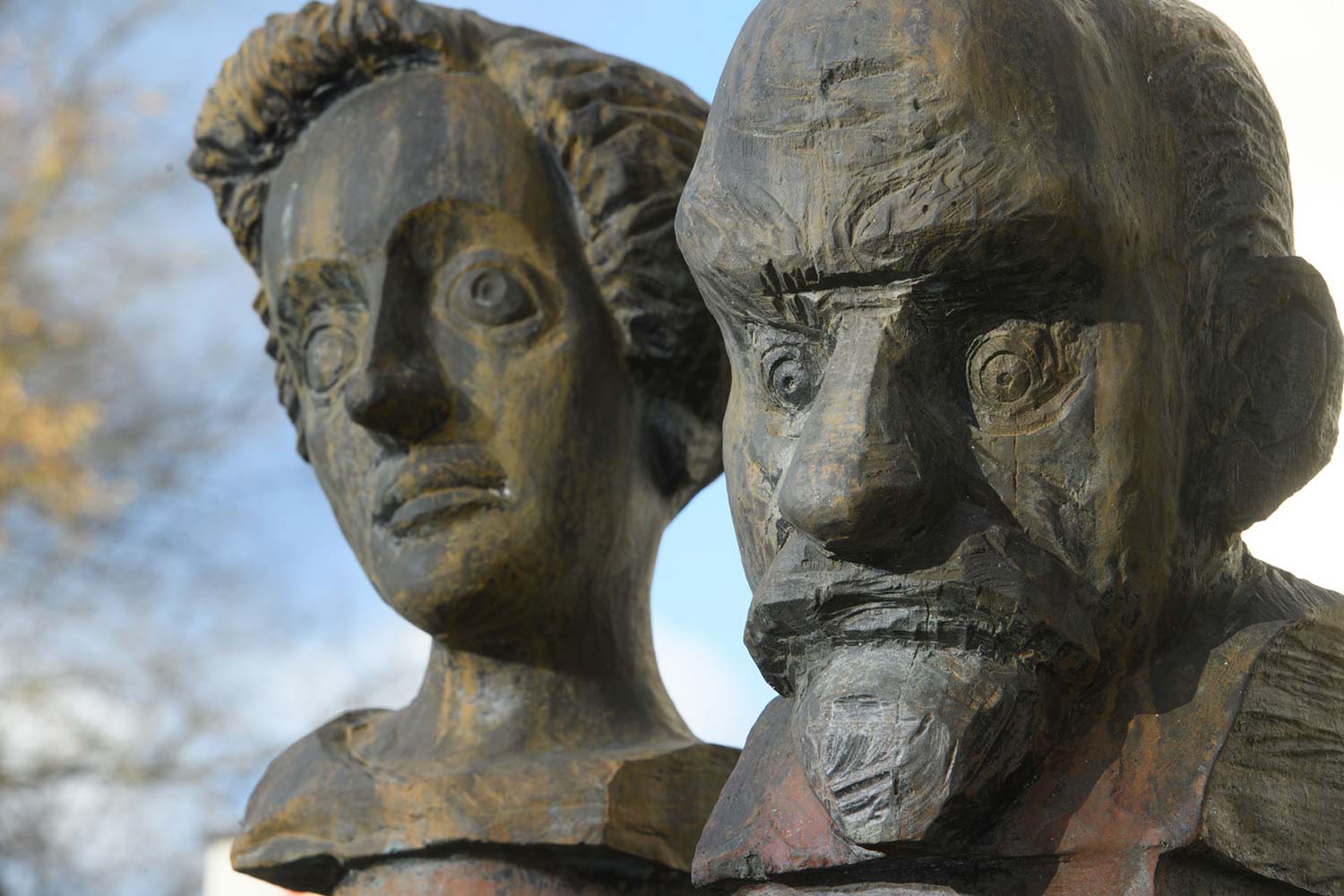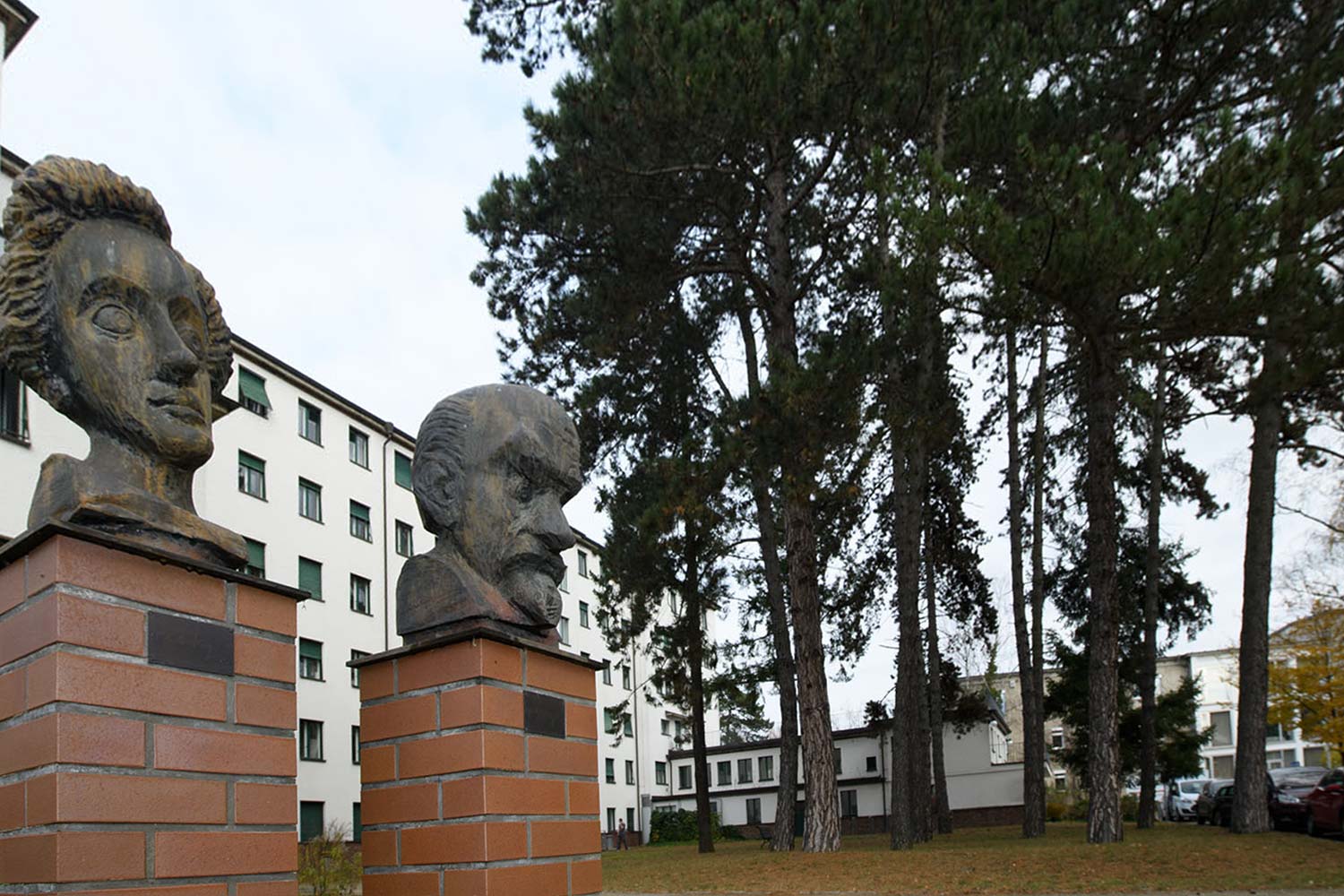13aOskar Vogt
April 6, 1870 in Husum –
July 31, 1959 in Freiburg

Oskar Vogt was a physician and brain researcher who worked and published together with his wife Cécile Vogt throughout his live. They established the theory that a person‘s abilities can be discerned from the architecture of his or her brain. The couple were renowned for years of accomplishments and honors that they were mostly awarded together. Oskar and Cécile Vogt are considered co-founders of research into brain architecture in the early 20th century.
Oskar Vogt was born on April 6th, 1870 in Husum. He studied psychology in Kiel starting in 1888 and medicine in Jena from 1890 onwards.
Oskar Vogt initially dealt with neuroanatomical studies. He received his doctorate in 1894 with a dissertation ”On fiber systems in the middle and caudal corpus callosum sections“. In the same year, to pursue studies in psychology, he sought out the psychiatrist and neurologist August Forel in Rürich-Burghölzli, Switzerland, where he learned the therapeutic use of hypnosis. Vogt then worked as an assistant at Paul Flechsig‘s psychiatric and mental hospital in Leipzig but was fired because of his use of hypnotic methods in therapy. He departed for Paris, where he worked with the Déjérines, a couple who both worked on neuroanatomy at the Salpêtrière hospital. It was there that Vogt met Cécile Mugnier in 1898. She followed him to Berlin in 1899 and they married in the same year. The young couple founded the private ”Neurological Central Station“ in an apartment building on Magdeburger Strasse (today Kluck Strasse).
In addition to research, Oskar Vogt worked as a neurologist and clinical hypnotist. His patients included wealthy personalities such as the industrial tycoon Friedrich Alfred Krupp and Krupp’s wife Margarete. In 1902, with their support, Vogt‘s station was incorporated as a neurobiological laboratory into the Institute for Physiology at the Friedrich-Wilhelms-University in Berlin.
In 1914 the Senate of the Kaiser Wilhelm Society approved the establishment of an institute for brain research. Oskar Vogt was appointed as its founding director. The institute was initially located on Magdeburger Strasse. In the 1920s, with support from the Rockefeller Foundation, the city of Berlin, and the Kaiser Wilhelm Society and with funds from the Weimar Republic, a new building for the institute was constructed in Berlin-Buch, near the municipal sanatorium and nursing home (formerly Insane Asylum III). Here, Oskar and Cécile Vogt devoted themselves to studies of the relationship between specific brain structures and the psychological and physical behavior of organisms.

In their large brain collection, which served as a scientific database, they also collected so-called "elite brains" or brains of criminals in addition to brains of diseased persons.
Oskar Vogt gained notoriety after dissecting Vladimir Ilyich Lenin‘s brain into 30,000 slices between 1925 and 1927. He declared the Russian politician and Marxism theorist an ”athlete of associations“ due to an extraordinary accumulation of pyramidal cells in the third layer of the cortex. Today this interpretation of brain structure is considered an obsolete overgeneralization. The study would cause problems for Oskar Vogt for the rest of his life, not for scientific reasons, but political ones.
Oskar and Cécile’s investigations into the functions of brain centers laid the foundation for an anatomical and functional mapping of the cerebral cortex, which is nearly complete today. At the time, this center was the world‘s largest institute for brain research. Oskar and Cécile Vogt headed the ”Architectural Brain Research“ department, where they searched for histological changes in the brains of patients with neurological diseases. This was a radical approach at a time when mental illnesses were considered disturbances of the soul rather than of the brain. As they searched for physiological explanations for neurological and psychiatric disorders, Oskar and Cécile Vogt were also interested in hereditary influences. In 1937/38 they published the results of their extensive investigations in a work on the ”Location and nature of diseases in the light of topistic brain research“.
Even though Oskar Vogt had been given the position as director of the institute for life, he was compulsorily retired by the National Socialists in 1934, but then continued to lead the institute on an interim basis until 1937 until a politically convenient successor was established. The Vogts were a bogeyman for the National Socialists in many respects; among other things, they were accused of having ties to the Soviet Union. But the fact that they employed many Jewish and international staff, that Cécile came from France and that they were so-called "double earners" who did not fulfill the Nazi family concept also contributed to the attacks and harassment.
The Vogts left Berlin and set up a new research facility in Neustadt in the Black Forest, again with the support of the Krupp family and the Rockefeller Foundation. Here Oskar and Cécile Vogt worked together until old age. Oskar Vogt died on July 31st, 1959 in Freiburg im Breisgau.
His and his wife's discoveries formed the basis for further work on the ”mind-body problem“. The topical brain research they conducted developed into dynamic localization theory.
Hans Scheib, Bronze, 2002